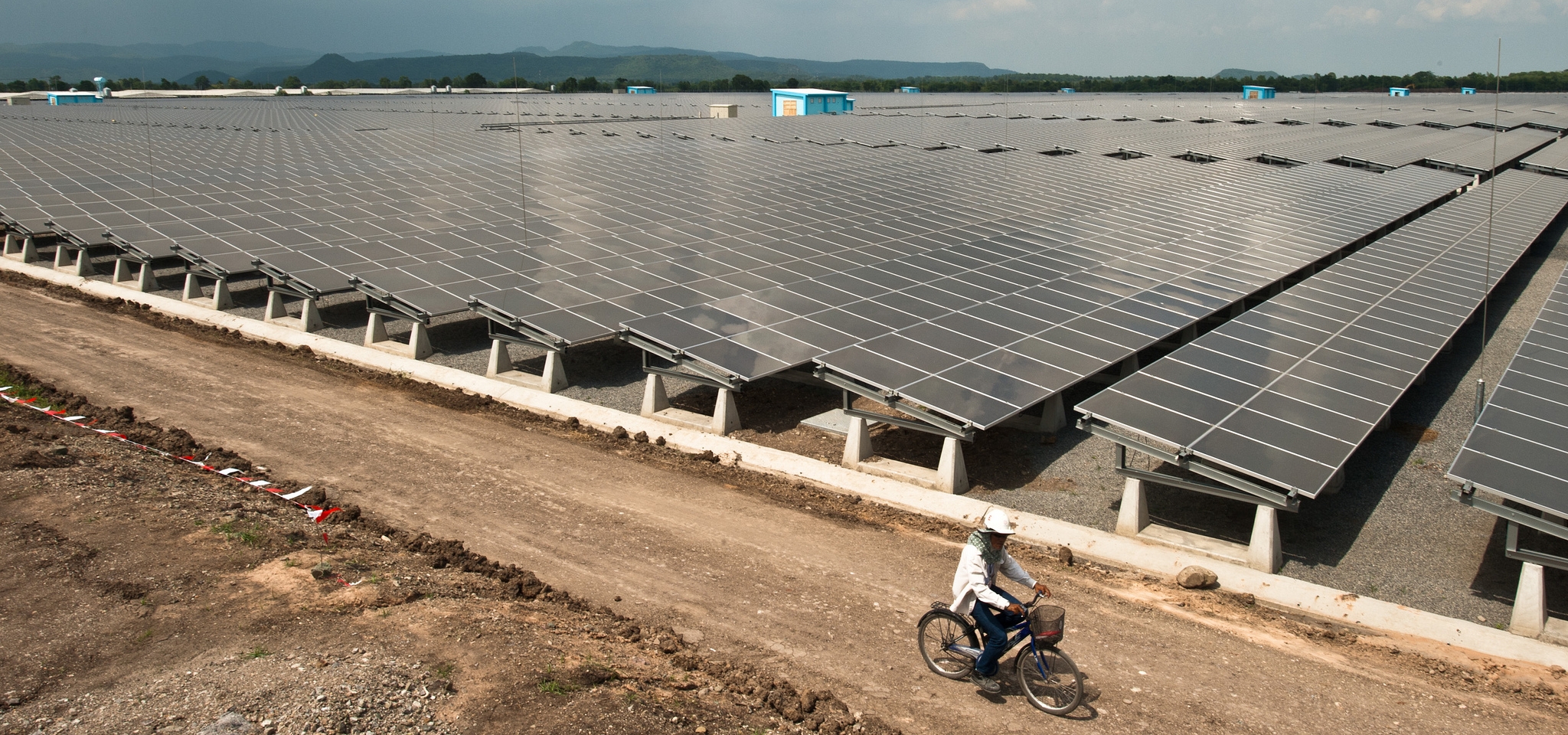Global installation figures are rolling in for wind and PV, and they look fantastic. The future is also bright: the forecast is for further growth. Single countries used to dominate these markets, but increasingly everyone is building. In fact, developing countries now invest more in renewables than the developed world does. Craig Morris takes a look.

With their large capacity added, the big countries get all the attention. But there is a renewable energy movement everywhere. (Photo by Asian Development Bank, modified, CC BY-NC-ND 2.0)
For many years, wind and solar depended on just a handful of countries. As we recently explained, Germany was crucial for PV, especially between the years 2004-2007. China now dominates both wind and solar – but the global market is huge for both technologies even without the Chinese.
According to the PV Market Alliance (PVMA), the global PV market rose to “at least 51 GW” after 40 GW last year. The Chinese market grew by 37 percent last year, overtaking Germany once and for all in terms of total capacity; the Chinese now have 43 GW, compared to Germany’s nearly 40 GW. But Japan was not far behind China at an estimated 10 GW of new capacity installed in that year. Furthermore, India built 2 GW, while other Asian countries added 2.5 GW. South and Central America built 1.5 GW, and 1 GW also went up in Africa and the Middle East.
In Europe, the leader for PV is once again the UK, which increased its installations from around 2.5 GW in 2014 to 3.3 GW last year (Excel file). The country, which now has nearly 8 GW of PV installed, aims to have a whopping 22 GW by the end of this decade. To do so, it will need to install around 2.4 GW annually for the next five years. In contrast, Germany – formerly the global leader – fell below 1.5 GW of new capacity installed last year.
As mentioned in our last post (2015 wind installations), the wind sector also reached a new high level of 55 GW – but we await more specifics in the coming weeks. The US market added 8.6 GW of wind power, bringing the country up close to 75 GW. But China stole the show, adding a whopping 30.5 GW – more than half of total new global installations. The Chinese now have around 145 GW installed.
But the apparent US and Chinese dominance of the global wind power market is misleading. There is movement everywhere. In the next few weeks, expect impressive figures and forecasts for Africa, South America, and Asia as well. Last November, Bloomberg New Energy Finance (BNEF) announced that the developing world already invested roughly the same or more than the developed world in 2014 and 2015. The International Renewable Energy Agency (IRENA) found in its Africa 2030 report of 2015 that the continent could have 3 GW of geothermal energy alone by 2030. An additional 100 GW of wind power could be installed along with more than 90 GW of solar by that year in Africa.
With their big numbers, the big countries get all the attention. India aims to have 60 GW of wind power by 2022, for instance. By that time, the country would have 175 GW of renewable power generation capacity (including everything already installed, such as hydropower). The Chinese have a target of 200 GW of wind power alone by 2020 and are looking into raising that to 250 GW.
But below the international radar, all countries are moving. Because the data for 2015 are not yet in from a lot of countries, I asked Steve Sawyer of the Global Wind Energy Council (GWEC) where he sees the main drivers at present outside of the big countries like China, the US, India, and the EU. He said, “In recent years, Brazil, Mexico, and South Africa have emerged as major markets. However, for the new growth markets in the medium term we’re looking in Africa at Egypt, Kenya and Ethiopia; in South America at Argentina and Chile, and in Asia at Viet Nam and Pakistan… among others, of course!”
The good news is that the solar and wind markets no longer depend upon the generosity of policymakers in fewer than a handful of countries. Vietnam is a case in point. In 2014, the country was poised to become a big coal producer and consumer. This year, it announced a review of all current coal plant projects, with a focus on natural gas and renewables. Policymakers everywhere are beginning to understand the business case for renewables. They are moving towards cleaner energy to protect the environment, prevent climate change, and for the macroeconomic benefits. Welcome to the beginnings of the global energy transition.
Craig Morris (@PPchef) is the lead author of German Energy Transition. He directs Petite Planète and writes every workday for Renewables International.